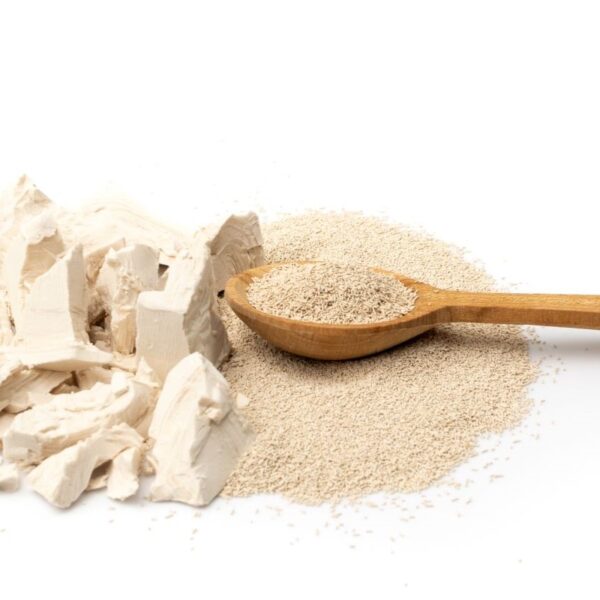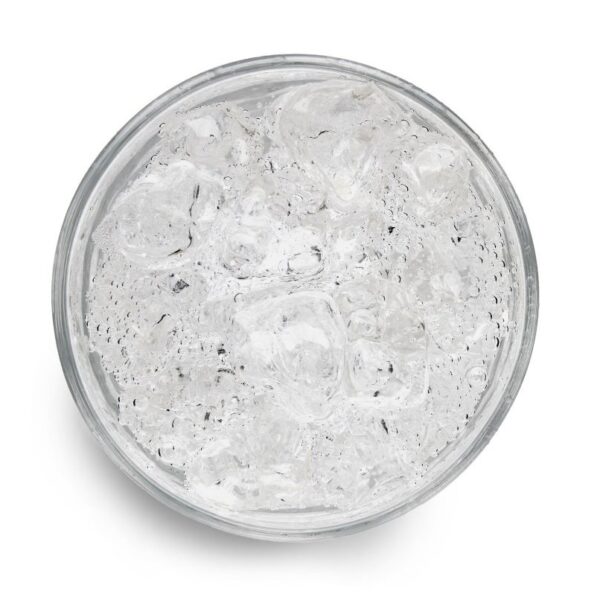Kaempferol is a natural flavonol, a class of flavonoids found in many fruits, vegetables, and herbs. This biologically active compound exhibits many pharmacological activities, including antioxidant, anti-inflammatory, antimicrobial, and antidiabetic activities. Kaempferol has also received attention for its reported ability to induce anticancer effects. It’s used as a dietary supplement and nutraceutical.
What is Kaempferol?
Kaempferol consists of two phenyl rings (rings A and B) connected to a heterocyclic ring (ring C). Quercetin and kaempferol share the same 3-hydroxy flavone backbone. Kaempferol is more chemically stable and less reactive than quercetin as it has one less hydroxyl group.
Source: Wikipedia
How is Kaempferol Produced?
Sources
The richest plant sources of kaempferol are green leafy vegetables, including spinach and kale, and herbs, such as dill, chives, and tarragon. The following table describes the concentration of kaempferol found in various plant sources.
| Source | Kaempferolmg/100g Fresh Weight |
|---|---|
| Apples | 0.14 |
| Asparagus | 1.40 |
| Broccoli | 7.20 |
| Chinese Cabbage | 22.5 |
| Kale | 47.0 |
| Leeks | 2.67 |
| Lettuce | 0.84 |
| Onions | 4.50 |
| Spinach | 55.0 |
| Chives | 12.5 |
| Dill | 40.0 |
| Fennel Leaves | 6.50 |
| Blueberry | 3.17 |
| Cherry | 5.14 |
| Cranberry | 0.21 |
| Wild Leaks | 5.31 |
| Black tea (mg/100 ml) | 1.70 |
| Red wine (mg/100 ml) | 0.25 |
Source: UDSA
Methods of Extraction
| Method | Description |
| Mechanochemical Extraction | – Water-based extraction for kaempferol glycosides – Comparatively better yield than solvent extraction |
| Solvent Extraction (Heat Reflux) | – Low reproducibility – High use of organic solvents |
| Supercritical Fluid Extraction | – Benefits: Non-toxic, non-flammable, odorless, and easily separated from the extract – Reproducible results – Requires supplementing solvents with relatively higher polarity for optimum extraction |
| Enzyme Assisted Extraction | – In a study, enzymatic hydrolysis of kaempferol glycosides with an optimum combination of enzymes β-galactosidase and hesperidinase produced pure kaempferol with over 95% purity. – Low-cost method compared to plant sources |
Kaempferol can also be synthetically produced. A study synthesized it using 1,3,5-trimethoxybenzene through a seven-step reaction with 47% yield.
Properties of Kaempferol
| Physical Form | Solid, powder |
| Storage Temperature & Conditions | 15-25°C, away from sunlight |
| Molecular Weight | 286.24 |
| Appearance | Yellow crystalline solid |
| Density | 1.688 g/mL |
| Melting Point | 277°C |
| Boiling Point | 582.00-583.00°C |
| Vapor Pressure | 1.1*10-13mm Hg at 25°C |
| Solubility | Soluble in hot alcohol, ether, or alkalies |
Typical Formulations
Nutritional Composition
Here is an example of a nutritional composition formulation table with Kaempferol, along with the weight of ingredients:
| Nutrient | Minimum | Maximum |
| Protein (g) | 1.8 | 6.8 |
| Fat (g) | 1.3 | 7.2 |
| Carbohydrates (g) | 6 | 22 |
| Prebiotic (g) | 0.3 | 1.2 |
| DHA (g) | 4 | 22 |
| Beta glucan (mg) | 2.9 | 17 |
| Kaempferol (mg) | 0.1 | 5 |
| Fisetin (mg) | 3 | 25 |
| Probiotics (cfu) | 9.60 × 105 | 3.80 × 108 |
| Vitamin A (IU) | 134 | 921 |
| Vitamin D (IU) | 22 | 126 |
| Vitamin E (IU) | 0.8 | 5.4 |
| Vitamin K (mcg) | 2.9 | 18 |
| Thiamin (mcg) | 63 | 328 |
| Riboflavin (mcg) | 68 | 420 |
| Vitamin B6 (mcg) | 52 | 397 |
| Vitamin B12 (mcg) | 0.2 | 0.9 |
| Niacin (mcg) | 690 | 5881 |
| Folic acid (mcg) | 8 | 66 |
| Pantothenic acid (mcg) | 232 | 1211 |
| Biotin (mcg) | 1.4 | 5.5 |
| Vitamin C (mg) | 4.9 | 24 |
| Choline (mg) | 4.9 | 43 |
| Calcium (mg) | 68 | 297 |
| Phosphorus (mg) | 54 | 210 |
| Magnesium (mg) | 4.9 | 34 |
| Sodium (mg) | 24 | 88 |
| Potassium (mg) | 82 | 346 |
| Chloride (mg) | 53 | 237 |
| Iodine (mcg) | 8.9 | 79 |
| Iron (mg) | 0.7 | 2.8 |
| Zinc (mg) | 0.7 | 2.4 |
| Manganese (mcg) | 7.2 | 41 |
| Copper (mcg) | 16 | 331 |
Source: Google Patents
Kaempferol Formulation Considerations
Kaempferol Glycosides
Flavonols aglycones (the free form of flavonols), such as kaempferol, have lipophilic (fat-soluble) properties. However, most plant-based flavonols are present as glycosides when extracted naturally. The glycosides are hydrophilic and are water-soluble. The hydroxyl functional groups on the rings in flavonol structure are potential sites for linkage to sugar moieties, with the most common being monosaccharides glucose, rhamnose, galactose, arabinose, xylose, and the disaccharide retinoid. The major kaempferol glycosides from select plant sources are -glucopyranoside and -neohesperidose from wild garlic, rutinoside & glucoside from black tea, -sophoroside from broccoli, -3- glucuronide, 3-glucoside from endive, -sophoroside glucuronide & -rutinoside glucuronide from wild leeks. A few studies have reported that the glycosides are less active than their parent aglycones.
Absorption & Metabolism
When foods rich in flavonols are ingested, the aglycones and glycoside forms undergo different routes of digestion and absorption. Lipophilic aglycons passively diffuse unmetabolized from the intestinal lumen into the enterocytes, where they are either directly absorbed into the hepatic portal vein or metabolized before absorption. Metabolism of the aglycones in the enterocytes involves phase I (oxidation and O-demethylation) and phase II metabolism (sulfation, glucuronidation, and methylation). Flavonol metabolites are excreted by urinary and biliary elimination. Studies have reported that the urinary excretion of kaempferol consumed as a component of black tea is 2.5% in humans and 0.9% in rats through broccoli.
Bioavailability
The studies involving inference about the oral bioavailability of kaempferol are limited. Pharmaceutical studies of kaempferol and quercetin show that they are more efficiently bioavailable in conjugate form rather than the free form. Additionally, studies have confirmed that quercetin cannot be endogenously synthesized from dietary kaempferol in humans.
Nanotechnology can improve the bioavailability of kaempferol. Novel delivery systems for kaempferol have been developed to improve the bioavailability and support the antioxidant activity of kaempferol for therapeutic benefits.
Biological Activity
Flavonoids play an important role in the physiological processes of plants, including defense against pests, pathogens, and many other environmental stresses. The biological activity of kaempferol in humans depends on the type of ingested conjugates and their bioavailability. Epidemiological studies have investigated the association between intakes of dietary kaempferol and health benefits like improved cardiovascular health. The studies have associated the beneficial effects of kaempferol mostly commonly with its antioxidant/ anti-inflammatory activity, as described in the table below.
| Antioxidant | In a study, kaempferol was able to significantly reduce hepatic lipid peroxidation products and increase the reduced glutathione level.In a comparative study, the inhibition of reactive oxygen and nitrogen species generation was significantly strong for kaempferol. |
| Anti-inflammatory | A study published in AACR showed that a higher dietary intake of kaempferol significantly reduced inflammation in humans.Kaempferol has also been shown to reduce the level of reactive oxygen species, expression of inducible nitric oxide synthase, pro-inflammatory mediators, and chemokines. |
| Antiviral | Kaempferol has been shown to inhibit kinase B and phosphorylation of protein kinase along with blocking effects on a selective channel (3a channel) expressed in SARS-CoV infected cells. |
| Antifungal | A study in Pharmaceutical Biology showed that kaempferol demonstrates antifungal activity with the minimum inhibitory concentration of 128–256 μg/mL against C. albicans. Kaempferol has also been reported to demonstrate activity inhibiting the growth of A. niger, A. flavus, F. oxysporium, P. camemberti. |
| Antibacterial | Flavonoids inhibit bacterial growth by membrane rupture and permeabilization, interaction with membrane protein, inhibition of membrane biosynthesis, and uncontrolled ROS generation. In a study, kaempferol reduced the expression level of metabolites helping in biofilm formation, including clfA, clfB, and fnbA, fnbB, and hindered biofilm formation by altering fibrinogen in S. aureus. It has also been shown to inhibit the interaction of DNA-binding helicase and dNTPs to prevent the growth of K. pneumonia. |
Health Effects
| Cardio Protection | In a study, the cardioprotective activity of kaempferol was highlighted, with a strong inversely proportional correlation between mortality from coronary heart disease and intake of flavonols, including kaempferol. Kaempferol has been shown to improve cardiac function by alleviating myocardial apoptosis, fibrosis, oxidative stress, and inflammation while preserving mitochondrial function and calcium homeostasis.Kaempferol acts as an inhibitor of oxidation of low-density lipoproteins via scavenging reactive oxygen species and thus helps to reduce the risk of coronary heart complications. |
| Neuroprotection | Kaempferol-3-O-β-d-glucuronate has demonstrated anti-neuroinflammatory activity by downregulating phosphorylated mitogen-activated protein kinases (MAPKs).A study reported that kaempferol significantly reduced neuropathic pain and proinflammatory cytokine production. |
| Antidiabetic | Kaempferol promotes insulin secretion similar to insulin secretagogue.Kaempferol activates mitochondrial calcium monoporter in a concentration-dependent manner, increasing the uptake of mitochondrial Ca2+ to activate the pancreatic β-cell metabolism/secretion coupling. |
| Cancer Chemoprevention | Kaempferol is a potent promoter of apoptosis and modifies a host of cellular signaling pathways.At the molecular level, kaempferol has been reported to modulate a number of key elements in cellular signal transduction pathways linked to apoptosis, angiogenesis, inflammation, and metastasis. Significantly, kaempferol inhibits cancer cell growth and angiogenesis and induces cancer cell apoptosis. On the other hand, kaempferol appears to preserve normal cell viability, in some cases exerting a protective effect. |
| Hepatoprotection | Kaempferol has been reported to help alleviate liver injuries by improving the level of thiobarbituric acid reactive substances. |
Safety & Toxicity of Kaempferol
There is no evidence of toxicity of oral intake of kaempferol in humans. It is a potent promoter of apoptosis and regulates a range of signaling pathways inside cells. Kaempferol is relatively less toxic to normal cells than standard cancer chemotherapy.
Identification Numbers
| IUPAC Name | 3,5,7-trihydroxy-2-(4-hydroxyphenyl)chromen-4-one |
| CAS Number | 520-18-3 |
| EC Number | 208-287-6 |
Fun Facts About Kaempferol
- In traditional medicine systems, some plant sources rich in kaempferol have been used for their potential therapeutic benefits. For example, Ginkgo biloba has been used in traditional Chinese medicine for cognitive health.
- Kaempferol’s antioxidant and anti-inflammatory properties could contribute to skin health, protecting the skin from UV damage, reducing redness, and promoting a healthy complexion.
Additional Resources
- ScienceDirect | Kaempferol’s Anti-inflammatory and Antioxidant Properties
- Sigma Aldrich | Product Information for Kaempferol
- NCBI | Article on Kaempferol’s Therapeutic Properties
- NCBI | Another Article on Kaempferol or Related Topic
- Dietary Supplement Label Database (DSLD) | Search Results for Kaempferol






